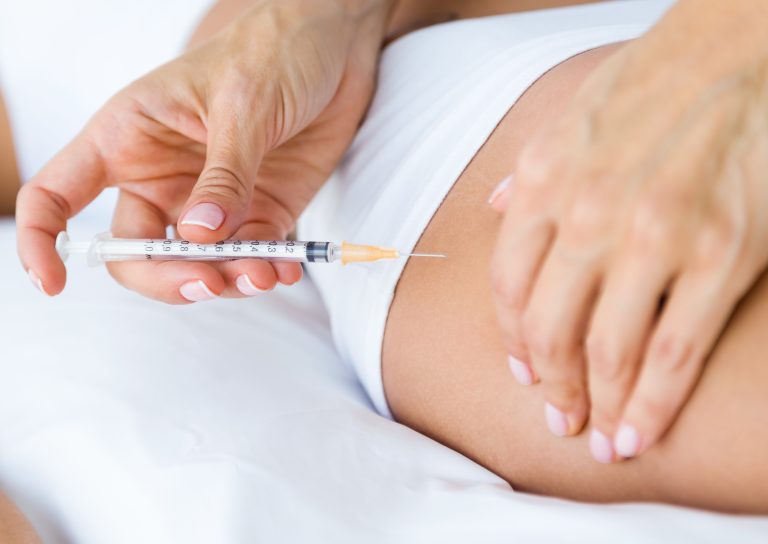Hip Flexor Tendonitis After Hip Replacement: Causes, Treatment, and Prevention
Imagine finally finding relief from chronic hip pain after undergoing a life-changing hip replacement surgery, only to be confronted with a new, unexpected challenge. For one patient, this is the reality.
Six years after their operation, they now find themselves grappling with a mysterious pain in the front of their hip whenever they attempt to lift their right leg. What could be the cause of this discomfort?
Could it be an issue with the artificial joint itself? Or perhaps an infection has taken hold?
A less alarming, yet still debilitating possibility is hip flexor tendinitis. Join us as we delve into the world of post-hip replacement complications and explore the potential treatment options that lie ahead.
hip flexor tendonitis after hip replacement
Hip flexor tendonitis after hip replacement surgery is a potential cause of pain experienced in the front of the hip, especially when lifting the leg. Other possible causes include problems with the artificial joint or infection.
It is crucial for the patient to see their surgeon for evaluation. Hip replacement surgery is generally successful in relieving pain and restoring hip function, but pain after surgery could indicate an underlying issue that can be resolved.
Infections can be treated with antibiotics, and loose implants may require additional surgery. In the case of hip flexor tendinitis, physical therapy and corticosteroid injections can help alleviate the pain.
Key Points:
- Hip flexor tendonitis can cause pain in the front of the hip after hip replacement surgery, particularly during leg lifting.
- Other potential causes of post-surgery hip pain include problems with the artificial joint or infection.
- Evaluating the patient by their surgeon is crucial to identify and resolve underlying issues.
- Infections can be treated with antibiotics, while loose implants may require additional surgery.
- To address hip flexor tendinitis, physical therapy and corticosteroid injections can be effective in reducing pain.
- Hip replacement surgery is generally successful in relieving pain and restoring hip function.
Sources
https://newsnetwork.mayoclinic.org/discussion/mayo-clinic-q-and-a-pain-near-artificial-hip-should-be-evaluated-without-delay/
https://pubmed.ncbi.nlm.nih.gov/28688837/
https://www.brandonorthopedics.com/hip-replacement-surgery-and-tendonitis-what-you-need-to-know/
https://dralisongrimaldi.com/blog/iliopsoas-impingement-after-total-hip-replacement/
Check this out:
💡 Pro Tips:
1. Avoid activities that exacerbate the pain: It is important for the patient to identify and avoid any activities or movements that worsen their hip flexor tendonitis pain after hip replacement surgery. This may include activities such as lifting the right leg or any movement that puts strain on the hip joint.
2. Utilize ice therapy: Applying ice to the affected area can help reduce inflammation and alleviate pain. The patient can use an ice pack or a bag of frozen vegetables wrapped in a thin cloth and apply it to the front of the hip for about 15-20 minutes several times a day.
3. Gentle stretching exercises: Engaging in gentle hip flexor stretching exercises can help improve flexibility and reduce tension in the tendons. The patient should consult with their physical therapist or surgeon to learn and perform appropriate stretching exercises that target the hip flexors without causing further pain or damage.
4. Modify daily activities: Making modifications to daily activities can help prevent aggravation of hip flexor tendonitis. This may include using assistive devices such as a reacher or long-handle shoe horn to put on socks, avoiding activities that require excessive hip flexion, and using proper body mechanics when getting in and out of the car to reduce strain on the hip joint.
5. Consider alternative treatments: In addition to traditional treatments such as physical therapy and corticosteroid injections, the patient may also explore alternative therapies such as acupuncture, massage, or chiropractic care. These treatments may help alleviate pain and promote overall hip joint health, but should be discussed and approved by the patient’s medical team.
Symptoms Of Hip Flexor Tendonitis After Hip Replacement
After undergoing hip replacement surgery six years ago at the age of 67, the patient is now experiencing pain toward the front of their hip when lifting their right leg. This pain has started to affect their daily activities, such as getting into the car or even putting on socks.
These symptoms indicate the possibility of hip flexor tendonitis, which is the inflammation of the tendons in the hip flexor muscles.
The hip flexors are a group of muscles that help to lift the leg and bend the hip joint. The tendons in these muscles can become irritated and inflamed due to repetitive movements or overuse.
In the case of the patient, the tendonitis could be a result of the strain placed on the hip flexors during hip replacement surgery or from the continuous use of the hip joint over the years.
It is important for the patient to seek medical attention to determine the exact cause of their symptoms. While hip flexor tendonitis is a possibility, it is essential to rule out other potential causes such as an artificial joint problem or infection.
This leads us to explore the various causes of hip pain after hip replacement.
Causes Of Hip Pain After Hip Replacement
Hip replacement surgery involves the replacement of the damaged hip joint with an artificial joint. This procedure is typically successful in relieving pain and restoring hip function.
However, in some cases, pain may persist after surgery, indicating an underlying problem that needs to be addressed.
One possible cause of hip pain after hip replacement is infection. Infections can occur in the artificial joint and may present with symptoms such as pain, swelling, redness, and fever.
In less severe cases, infections can be treated with antibiotics. However, in more severe cases, additional surgery may be required to remove the infected implant and replace it with a new one.
Another potential cause of hip pain after hip replacement is loose implants. Over time, the artificial joint may become loose, leading to pain and instability.
This can occur due to wear and tear, bone loss, or inadequate fixation during the initial surgery. In such cases, revision surgery may be necessary to correct the problem and secure the implants properly.
Furthermore, hip flexor tendinitis can also be a source of pain after hip replacement surgery, as previously mentioned. This condition occurs when the tendons in the hip flexor muscles become inflamed and irritated.
It is important to consider this as a possible cause of pain as it can be treated specifically with targeted interventions.
Importance Of Medical Evaluation For Post-Surgery Pain
If a patient experiences persistent hip pain after hip replacement surgery, it is crucial for them to see their surgeon for a thorough evaluation. A medical professional will be able to assess the situation and determine the exact cause of the pain.
This evaluation may involve a physical examination, medical history review, imaging tests, and possibly blood work to rule out infection.
It is important not to ignore post-surgery pain as it can indicate a problem that, if left untreated, may become more severe over time. Once the cause of the pain is determined, appropriate treatment options can be discussed, allowing the patient to regain their mobility and quality of life.
Potential Complications: Infection And Loose Implants
Infections and loose implants are two potential complications that can occur after hip replacement surgery and may result in hip pain. Infections can be caused by bacteria entering the surgical site or by the spread of an infection from another part of the body.
It is essential to promptly address and treat infections to prevent further complications.
Loose implants can occur due to factors such as wear and tear, bone loss, or poor implant fixation during the initial surgery. If left untreated, loose implants can lead to pain, instability, and further damage to the surrounding tissues.
Revision surgery may be required to correct the problem and ensure the artificial joint is properly secured.
It is important to note that both infections and loose implants can cause symptoms similar to those experienced with hip flexor tendinitis. Therefore, a thorough medical evaluation is necessary to determine the exact cause of the hip pain and to implement the most appropriate treatment approach.
Hip Flexor Tendonitis As A Possible Source Of Pain
Considering the patient’s symptoms of pain in the front of the hip when lifting the right leg, hip flexor tendonitis is a plausible cause. This condition occurs due to the inflammation of the tendons in the hip flexor muscles, which can be strained during hip replacement surgery or through continuous use of the hip joint over time.
Treating hip flexor tendonitis involves a combination of conservative measures targeted at reducing inflammation and promoting healing. Physical therapy exercises and stretches can help to improve hip flexor flexibility and strength.
Additionally, corticosteroid injections can be administered directly into the affected area to provide temporary pain relief and reduce inflammation.
It is important to note that addressing hip flexor tendonitis may require modifications to daily activities, such as avoiding activities that aggravate the condition and allowing adequate rest and recovery time. Implementing these strategies can help relieve the pain associated with hip flexor tendonitis and improve overall hip function.
Treatment Options For Hip Flexor Tendonitis Pain
When dealing with hip flexor tendonitis after hip replacement surgery, there are various treatment options available to alleviate pain and promote healing. Alongside rest and modification of activities to avoid aggravating the condition, physical therapy plays a significant role in the recovery process.
Physical therapy exercises and stretches can help to improve hip flexor strength and flexibility, reducing strain on the tendons. These exercises should be performed under the guidance of a qualified physical therapist who can tailor the program to the individual’s specific needs.
In some cases, corticosteroid injections may be administered directly into the inflamed hip flexor tendons to provide temporary pain relief and reduce inflammation. This can be done in conjunction with physical therapy to optimize outcomes.
It is also recommended to use nonsteroidal anti-inflammatory drugs (NSAIDs) to reduce pain and inflammation. These medications can be used in combination with physical therapy and injections to provide a comprehensive approach to pain relief and healing.
Preventing hip flexor tendonitis after hip replacement surgery involves proper rehabilitation and avoiding excessive strain on the hip joint. It is essential for patients to follow their surgeon’s post-surgical instructions, including participating in a structured rehabilitation program to strengthen the hip muscles and optimize joint function.
In summary, hip flexor tendonitis can occur after hip replacement surgery and result in persistent pain. It is necessary for patients to seek medical evaluation to determine the exact cause of their symptoms.
Infections and loose implants are potential complications that need to be ruled out, alongside considering hip flexor tendonitis as a source of pain. Treatment options for hip flexor tendonitis include physical therapy, corticosteroid injections, and NSAIDs.
By addressing the underlying cause and implementing appropriate treatment approaches, patients can regain comfort, mobility, and improve their quality of life after hip replacement surgery.







